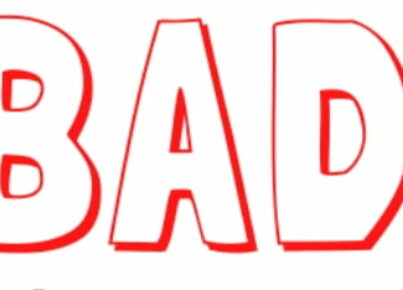In the digital age, eBooks have become a popular medium for sharing stories, knowledge, and ideas. Crafting a compelling eBook requires more than just stringing words together; it involves mastering the art of digital storytelling. Whether you’re an aspiring author, a content creator, or a business looking to leverage eBooks for marketing purposes, understanding the techniques and strategies behind creating captivating eBooks is essential.
Introduction
The introduction section will provide a brief overview of the importance of eBooks in today’s digital landscape. It will highlight their versatility, accessibility, and the wide range of topics they can cover.
Understanding eBooks: Definition and Importance
This section will define what eBooks are and discuss their significance in the digital realm. It will explore the benefits of eBooks over traditional printed books, such as portability, convenience, and environmental sustainability.
The Art of Digital Storytelling
3.1 Crafting a Captivating Plot
A compelling eBook begins with a well-crafted plot that grabs readers’ attention from the start. This subsection will discuss the elements of a captivating plot, including conflict, suspense, and a well-defined story arc.
3.2 Developing Engaging Characters
Characters play a crucial role in eBook storytelling. This subsection will explore techniques for creating relatable and memorable characters that readers can connect with on an emotional level.
3.3 Setting the Scene: Creating Vivid Settings
An immersive setting can transport readers to another world and enhance the reading experience. This subsection will delve into the art of creating vivid and engaging settings that captivate readers’ imaginations.
3.4 Using Dialogue to Enhance the Narrative
Dialogue adds depth and authenticity to eBook storytelling. This subsection will explore techniques for writing compelling dialogue that reveals character traits, advances the plot, and creates engaging interactions.
The Power of Emotion in eBooks
4.1 Eliciting Emotional Responses
Emotional connections are at the heart of powerful storytelling. This subsection will discuss how to evoke emotions in readers by incorporating elements such as relatable experiences, empathetic characters, and thought-provoking themes.
4.2 Connecting with Readers on an Emotional Level
Building on the previous subsection, this section will explore strategies for establishing a strong emotional bond between the reader and the eBook. It will discuss the use of sensory details, authentic emotions, and relatable situations.
Structuring Your eBook for Maximum Impact
5.1 Choosing the Right eBook Format
Selecting the appropriate eBook format is essential for delivering a seamless reading experience. This subsection will discuss various eBook formats, their compatibility with different devices, and the considerations for choosing the right format.
5.2 Organizing Chapters and Sections
Effective organization and structure enhance the readability of eBooks. This subsection will provide insights into organizing chapters, sections, and subheadings to create a logical flow and improve user experience.
5.3 Utilizing Visual Elements
Visual elements, such as images, illustrations, and infographics, can enhance the eBook’s visual appeal and convey information more effectively. This subsection will explore the use of visual elements and provide tips for their integration.
Writing Techniques for Compelling eBooks
6.1 Using Descriptive Language and Imagery
Descriptive language and vivid imagery bring eBooks to life. This subsection will discuss techniques for using sensory details, metaphors, and similes to paint a picture in readers’ minds.
6.2 Employing Metaphors and Analogies
Metaphors and analogies can make complex concepts more relatable and accessible. This subsection will explore how to effectively use metaphors and analogies to convey ideas, evoke emotions, and enhance reader understanding.
6.3 Balancing Show vs. Tell
Balancing showing and telling is crucial in eBook writing services. This subsection will explain the difference between showing and telling, and provide guidance on when to use each technique to create a well-rounded narrative.
6.4 Creating Suspense and Tension
Engaging eBooks often incorporate suspense and tension to keep readers hooked. This subsection will explore strategies for building suspense, creating unexpected plot twists, and maintaining reader engagement throughout the story.
Editing and Polishing Your eBook
7.1 The Importance of Proofreading
Meticulous proofreading is vital to ensure a professional and error-free eBook. This subsection will emphasize the importance of proofreading, provide tips for effective self-editing, and suggest the use of proofreading tools.
7.2 Seeking Professional Editing Services
For authors or businesses aiming for a polished final product, professional editing services can elevate the quality of an eBook. This subsection will discuss the benefits of hiring professional editors and provide recommendations for finding reputable editing services.
Publishing and Marketing Your eBook
8.1 Choosing the Right Publishing Platform
Publishing platforms play a significant role in distributing eBooks to the target audience. This subsection will explore popular eBook publishing platforms, their features, and considerations for selecting the most suitable platform.
8.2 Creating an Eye-Catching Cover
A visually appealing eBook cover can attract potential readers and increase the chances of success. This subsection will discuss design principles, cover elements, and tips for creating an eye-catching eBook cover.
8.3 Implementing Effective Marketing Strategies
To reach a wider audience, effective marketing strategies are essential. This subsection will explore various marketing techniques, including social media promotion, email marketing, and collaboration opportunities, to maximize eBook visibility.
Fiction vs. Nonfiction eBooks: Understanding the Difference
9.1 Characteristics of Fiction eBooks
Fiction and nonfiction eBooks have distinct characteristics. This subsection will outline the key elements of fiction eBooks, such as narrative structure, character development, and imaginative storytelling.
9.2 Characteristics of Nonfiction eBooks
Nonfiction eBooks focus on presenting factual information and real-world topics. This subsection will discuss the unique features of nonfiction eBooks, including research, informative content, and the importance of credibility and accuracy.
9.3 Target Audience and Market Considerations
Understanding the target audience and market dynamics is crucial when creating both differences between fiction and nonfiction eBooks. This subsection will explore the importance of audience analysis, market research, and tailoring eBook content to meet readers’ needs and interests.
Conclusion
In conclusion, crafting compelling eBooks requires mastering the art of digital storytelling. By employing effective writing techniques, understanding the power of emotions, structuring eBooks for maximum impact, and utilizing proper editing and marketing strategies, authors and businesses can create captivating eBooks that engage readers and leave a lasting impression.
FAQs
Can I use images from the internet in my eBook?
- Yes, you can use images from the internet in your eBook, but it’s important to ensure that you have the proper rights and permissions to use those images. Consider using royalty-free or Creative Commons licensed images, or obtain permission from the copyright holders.
How long should my eBook be?
- The length of an eBook can vary depending on its purpose and genre. Fiction eBooks typically range from 60,000 to 100,000 words, while nonfiction eBooks can be shorter or longer, depending on the complexity of the topic and the depth of information provided. Focus on delivering value and engaging the reader rather than strictly adhering to a specific word count.
Do I need professional editing services for self-published eBooks?
- While self-editing is a crucial step in the eBook creation process, professional editing services can significantly improve the quality and polish of your eBook. Professional editors can help with grammar, structure, clarity, and consistency, ensuring a more professional end product.
Are there any copyright considerations when using real-life events in fiction eBooks?
- When using real-life events in fiction eBooks, it’s important to exercise caution and avoid infringing on copyright laws. While facts and historical events are generally not copyrightable, it’s crucial to differentiate between facts and the creative expression surrounding those events. Be mindful of using public domain material, attributing sources when necessary, and seeking legal advice if you’re unsure about potential copyright issues.
What are some effective marketing platforms for promoting eBooks?
- There are various effective marketing platforms and strategies for promoting eBooks. Consider leveraging social media platforms like Facebook, Twitter, and Instagram to engage with potential readers. Additionally, utilizing email marketing, guest blogging, book review websites, and participating in online communities and forums can help increase visibility and generate interest in your eBook. Tailor your marketing approach to your target audience and explore both organic and paid promotional opportunities.






You must be logged in to post a comment.